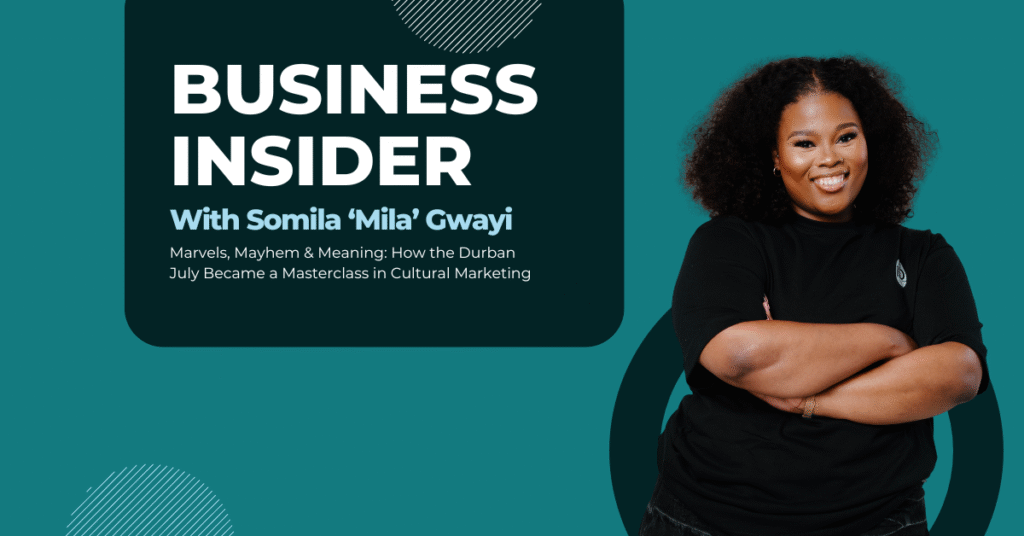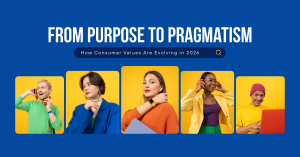By the time the last bottle of MCC had been popped and the content queues had reached saturation point, one thing was crystal clear: Durban July 2025 was anything but quiet. The Durban July was a blueprint for how fashion, nostalgia and identity merge to create cultural moments worth more than a press release or a front-row seat.
This year’s theme, “Marvels of Mzansi,” invited attendees to dive head-first into South African brilliance, not just in what we wear, but in who we are. And what transpired was a layered, complex and at times chaotic display of creativity, commentary and cultural capital that reminded us: This is not just an event. It’s an ecosystem.
What Exactly Is the Durban July?
Held annually since 1897, the Hollywoodbets Durban July started as a horse racing event but has long outgrown the track. Today, it’s South Africa’s own Met Gala, where influence, fashion, celebrity, and storytelling collide. It’s where style becomes strategy, and where showing up is about more than aesthetics; it’s about allegiance to the culture.
For brands, influencers, and media stakeholders, Durban July is a critical KPI moment, one that delivers high across key metrics: talkability (earned media), credibility (association and influence), creativity (content innovation), and reach (distribution and engagement). It’s a stage where design intersects with data, virality with value, and legacy with likes.
Marvels of Mzansi: More Than a Theme
This year’s theme wasn’t just catchy, it was visionary. Marvels of Mzansi didn’t only invite people to dress up; it dared them to imagine South Africa as the main character. And honestly? I absolutely loved it.
The theme felt futuristic, progressive, and deeply intentional, positioning South Africa not just as a player, but as a global style powerhouse, our very own Met Gala, our own Oscar red carpet moment. This wasn’t about slapping on local prints and calling it a day. It was a call to action: to honour who we are, where we’ve been, and where we’re boldly going.
At its core, Marvels of Mzansi was about radical self-recognition. It was about saying, “Hey world, we are the moment, and we’ve always been.” From music and streetwear to internet humour and visual storytelling, South African pop culture has never been louder, more layered, or more influential. This theme gave us the space to finally dress like it.
And while creators like @shortgirlydzeni25 offered beautifully simple breakdowns of what the theme meant, “Marvels means amazing, Mzansi means South Africa. So, wonderful things from South Africa,” what really mattered was how it showed up in practice: Designers referenced cultural icons, hometown relics, childhood nostalgia and post-Apartheid pride. Legacy became the look. Memory became material. Identity became the trend.
This wasn’t fashion for the algorithm. It was fashion as affirmation, and the world is finally watching.
Nostalgia as National Identity
One of the most talked-about and talked-with-respect looks came from Sphokuhle N, who showed up in a gown inspired by the iconic Mas’goduke bag, the checkered plastic tote symbolic of working-class dignity, migration, and memory in Black South African households.
But here’s where it gets deeper.
This wasn’t just a look, it was a lesson in nostalgic marketing done right. To us, nostalgic marketing means more than evoking the past for aesthetic value. It’s about honouring what shaped us, emotionally anchoring a moment in time, and turning cultural memory into something active, felt, and relevant. It’s legacy storytelling, in HD.
By referencing a symbol every South African knows – a bag our grandmothers packed, our uncles travelled with, our mothers still fold under the bed, Sphokuhle didn’t just wear a dress. She wore a feeling.
And in doing so, she spoke directly to the brief: Marvels of Mzansi. Because what’s more marvellous than turning a so-called “everyday object” into a moment of high fashion? What’s more Mzansi than finding meaning, pride and elegance in the stories we’ve lived?
As pop culture analyst Zethu Gqola noted,
“There is not one South African Black person who has an ancestor who did not own this bag.”
That’s the power of nostalgia: it doesn’t just make us remember, it makes us feel seen.It builds community. It builds context. And when worn with intention, it builds credibility that can’t be bought. Sphokuhle gave us a masterclass. Not just in fashion, but in what it looks like when memory meets meaning, and legacy meets luxury.
When Culture and Commerce Collide
The event also showcased the creative ceiling of South African talent, from Mihlali Ndamase’s Marvel x Ndebele crossover to Somizi’s tribute to his own queer legacy, fashion became a vessel for storytelling, cultural homage and personal narrative.
“He is a Marvel of Mzansi. He broke down so many barriers… what it means to be queer in South Africa has a lot to do with people like him,” said Gqola.
This kind of multidimensional dressing amplifies both the creator and the brand because every look becomes a micro-campaign. A shoppable story. A TikTok waiting to be stitched. A headline in the making.
Brand Relevance Is Built on Proximity
In a landscape where attention is the most valuable currency, events like the Durban July offer more than glitz; they offer tangible brand equity.
This isn’t just about being seen, it’s about being positioned. Whether you’re an influencer chasing virality, a fashion house launching a cultural moment, or a brand using nostalgia to anchor a campaign, proximity to this type of event builds credibility, sharpens perception, and fuels relevance.
Why does this matter?
Because Durban July creates a rare intersection of audience, influence and emotion. It gives:
- Influencers have the chance to cement their authority in culture, not just content.
- Brands have the opportunity to align with national sentiment and drive value beyond ads.
- Consumers have a chance to feel emotionally seen and buy into that feeling.
- Marketers, a platform where storytelling can convert into social currency and long-term affinity.
What’s the key takeaway from this, you may ask? If you’re in the business of visibility, don’t just show up when it’s trending; build your brand into the trend. Durban July is not the bandwagon. It’s the blueprint.
The Thread That Ties It All Together
What Durban July teaches us, especially in 2025, is that a theme is not a suggestion; it’s a strategic lens. A brief for brands. A challenge to creators. A responsibility to culture.
Miss the mark, and you risk irrelevance. Nail it, and you don’t just trend, you transcend.
The marvel this year wasn’t just in the design. It was in the conversation. In the callbacks to history. In the knowing nods to identity. And in the understanding that in South Africa, we don’t just wear fashion, we wear our story.




